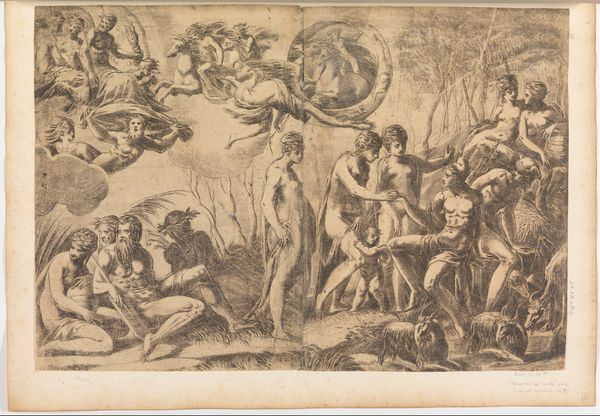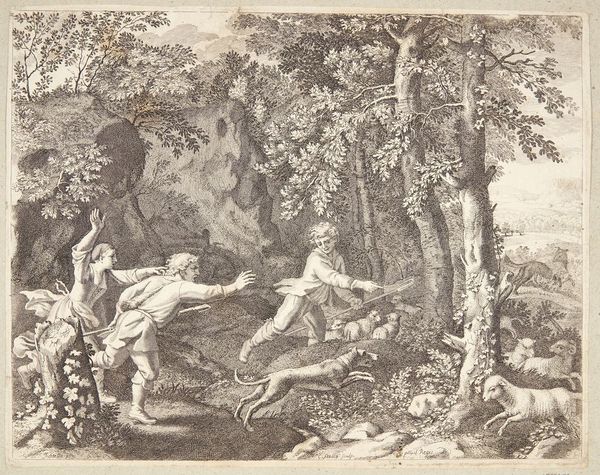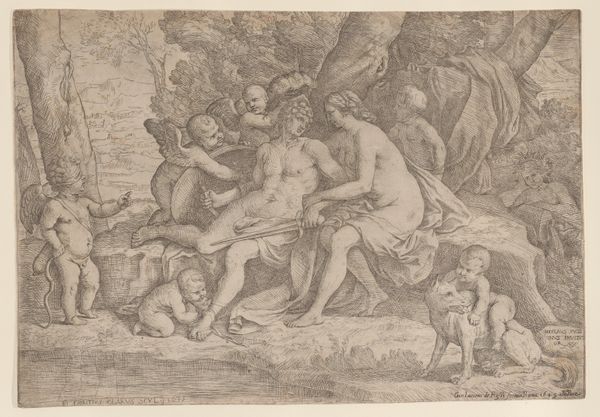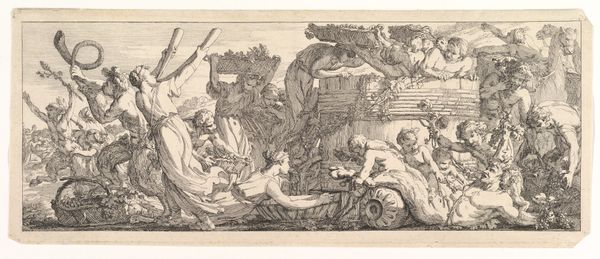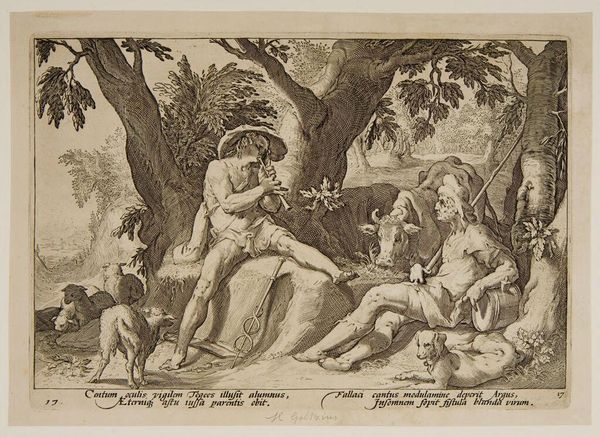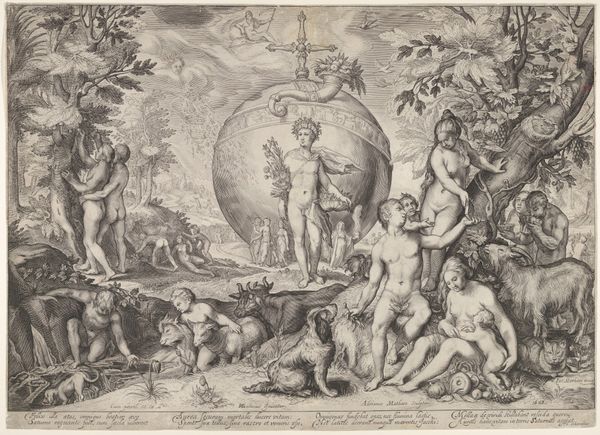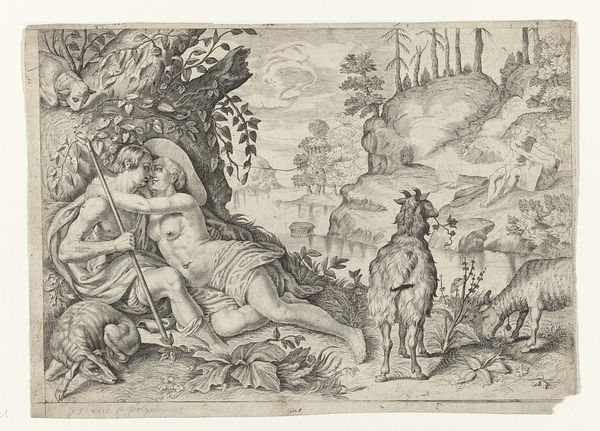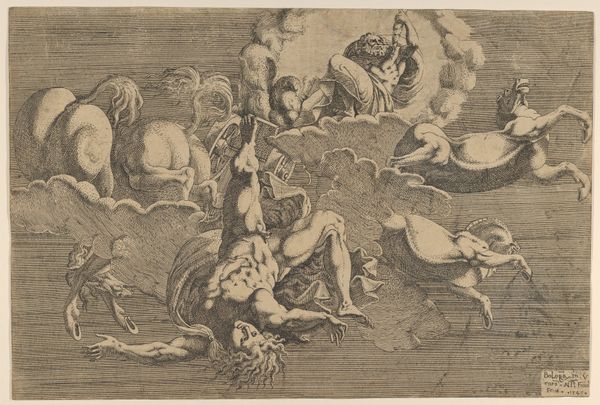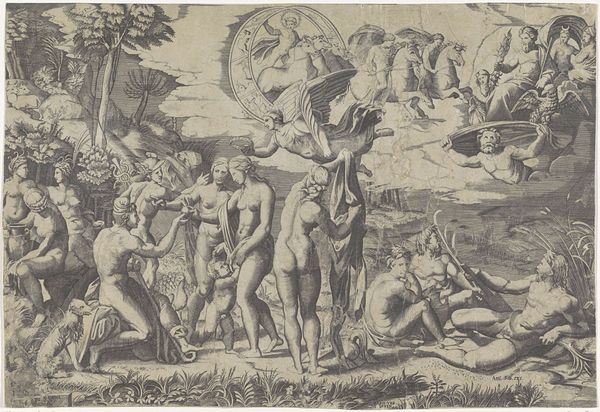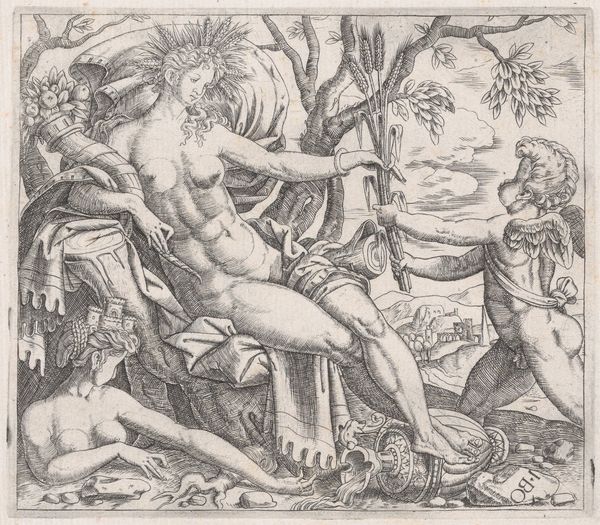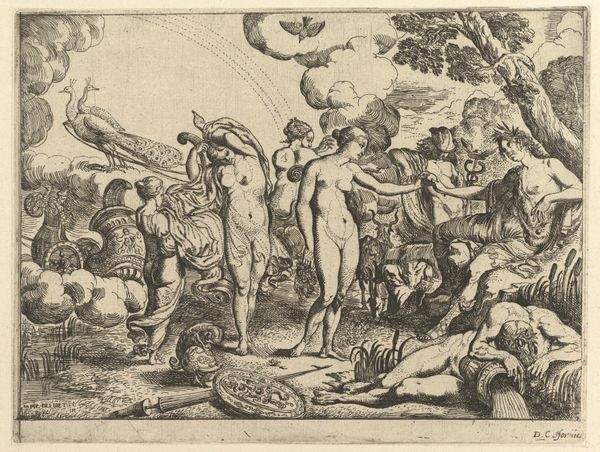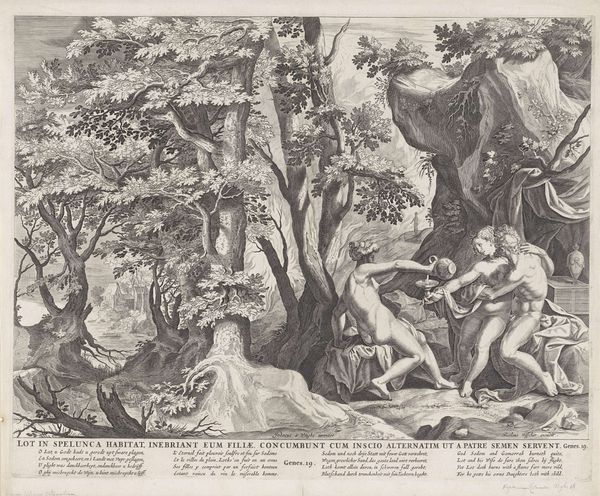
drawing, print, engraving
#
drawing
# print
#
landscape
#
charcoal drawing
#
figuration
#
11_renaissance
#
history-painting
#
northern-renaissance
#
nude
#
engraving
Dimensions: 283 mm (height) x 398 mm (width) (bladmaal)
Editor: We are looking at “Diana and Callisto,” an engraving created around 1606 by Jan Saenredam. The scene, teeming with figures in a landscape, feels both classical and, well, rather charged. What do you see in this piece? Curator: It’s crucial to recognize this image as more than just a depiction of a mythological scene. Saenredam presents us with a story ripe with themes of power, transgression, and the male gaze. The goddess Diana, surrounded by her nymphs, discovers Callisto's pregnancy, a direct result of Jupiter's deceit. Editor: So, the nudity isn’t just aesthetic, then? Curator: Absolutely not. The female nude here exists within a power dynamic. Consider the implications: Callisto's vulnerability is laid bare, literally and figuratively, exposed not just for our viewing pleasure, but also judged by Diana and her entourage. This isn’t merely about beauty; it’s about control and the consequences of violating societal norms, even when those norms are imposed by a patriarchal system disguised as divine order. How does that strike you? Editor: It makes me think about who gets to define those norms and the price women often pay for straying from them. Are we meant to sympathize with Diana, or with Callisto? Curator: Perhaps neither, or both. We might critique Diana's rigid enforcement of chastity while simultaneously acknowledging the tragedy of Callisto's violation. The print invites us to question these power structures, to understand the complexities of female relationships within such a constrained environment. What resonates with you most powerfully now? Editor: I’m left pondering the silent narratives of the other nymphs, and how they navigated the power structures within their closed environment. Thanks, I see this artwork from an entirely new angle now! Curator: Indeed. Art often reflects the social anxieties and power dynamics of its time, offering us valuable insights into the historical construction of identity and gender. It encourages critical examination of norms and inequalities that continue to shape our world.
Comments
No comments
Be the first to comment and join the conversation on the ultimate creative platform.
